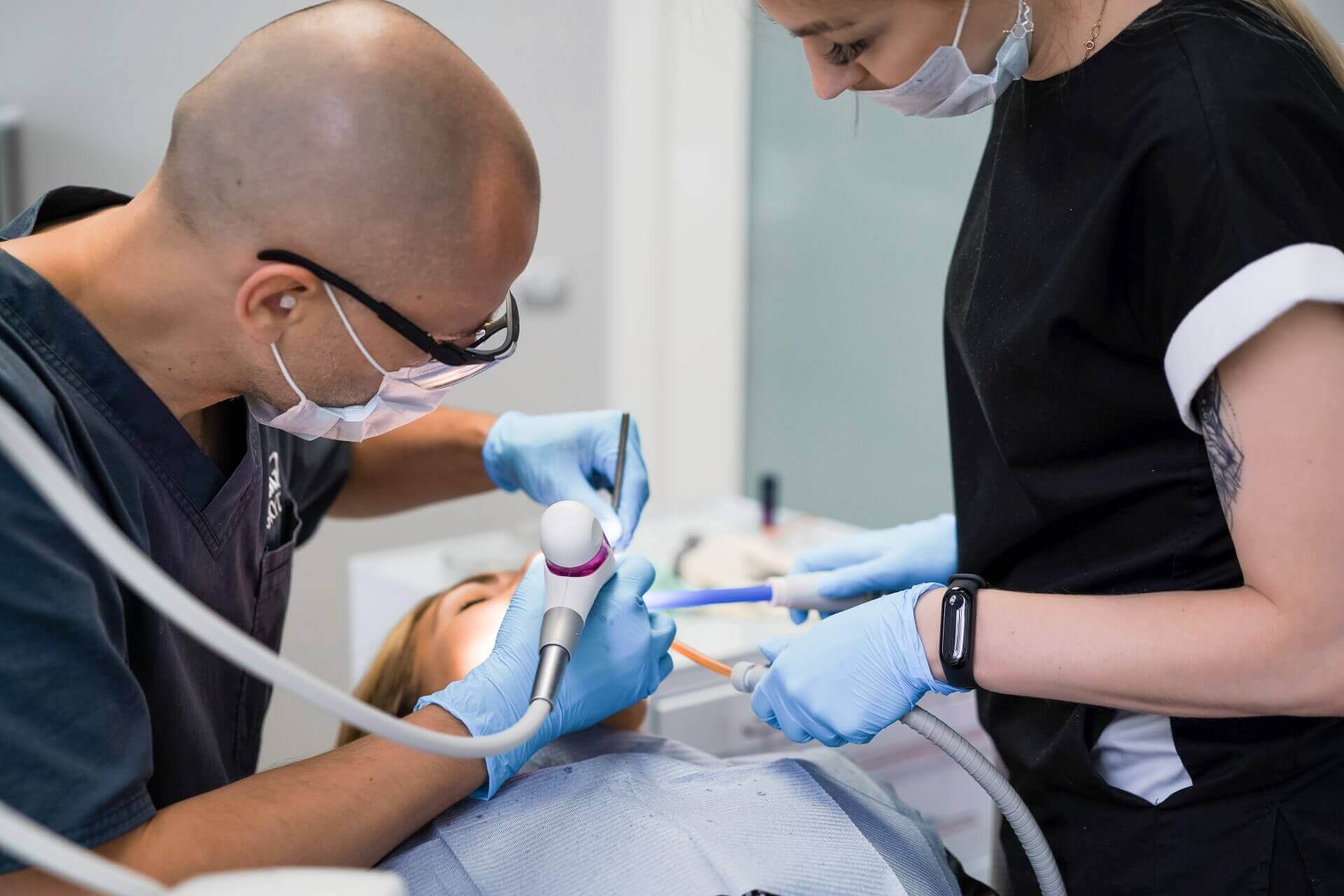If you are an aesthetician, it is definitely worthwhile learning about the types of gummy smile treatments available since around 7% of men and 14% of women have gummy smiles.
For various reasons, many people can be self-conscious about their smiles. This is particularly true for individuals who have a gummy smile because they may feel that their gums are drawing attention away from their teeth.
Thankfully, there are a variety of treatments available to fix this. But, first, we will explain what a gummy smile looks like and the potential causes of one.
What Is A Gummy Smile?

Also known as an excessive gingival display (EGD), a gummy smile is when the gum tissue above the top teeth is excessively predominant.
Typically, if a person smiles and more than 3 mm of gum is on display, then it can look out of proportion. This is because their teeth may appear too small, particularly if they are partially covered by gum tissue.
However, a gummy smile is not considered to be a medical issue, so it comes down to a matter of personal preference as to whether a person thinks they have a gummy smile or not.
What Causes A Gummy Smile?
Many natural factors can contribute to a person having a gummy smile. These are mostly related to the teeth, lips, jaw, and gum.
The common causes of a gummy smile are as follows:
Small Teeth
Whether through genetics or due to grinding, small teeth can give a person a gummy-smile appearance. This is because the teeth and gums look out of proportion to each other.
Excessive Gum Tissue
Probably one of the most common causes of a gummy smile. Excessive gum tissue is when the gum tissue covers a large portion of the teeth. This can be a symptom that occurs due to poor oral hygiene, but it can also be a side effect of certain medications.
Upper Lip Issues
If a person’s upper lip is too short, then, naturally, more gum tissue will be on display. Another factor that could contribute to a person having a gummy smile is if the muscles that control their upper lip are hyperactive. This can cause their upper lip to raise too high when they smile, resulting in more gum tissue being exposed.
Upper Jaw Overgrowth
The angle and shape of the jaw heavily determine the look of a person’s smile. For example, if the upper jaw is out of proportion to the lower jaw i.e. the upper jaw has overgrown or the lower is undergrown, then it can cause the gums to bulge out. This is known as maxillary excess and it can lead to a person having a gummy smile.
How To Fix A Gummy Smile
There are multiple treatments available to fix a gummy smile. The good news is that not all of them involve long-length surgical procedures.
Furthermore, many people are seeking non-surgical options, but it does depend on the severity of the gummy smile as to what type of treatment will be most suitable.
The severity levels are as follows:
- Mild – 2-4 mm of gum is exposed.
- Moderate – 4-6 mm of gum is exposed when smiling.
- Severe – 6 mm of gum is exposed when smiling.
Below are some popular types of treatment available for gummy-smile correction.
1) Botox Injections

For clients who prefer a non-surgical treatment to fix a gummy smile, then botox injections may be the perfect solution.
It’s less intrusive compared to other treatments for a gummy smile and is relatively inexpensive. Furthermore, it is considered to be the safest gummy-smile treatment.
Once you have injected your client with botox, their elevator muscles will be temporarily paralysed. This will limit the movement of the upper lip when they smile.
Visible results should appear within two weeks of the treatment and they can last up to 6 months.
You can tailor injections according to the shape of your client’s face shape. The treatment should take around an hour to complete.
The active ingredient in 50U vials of Botox and 100U vials of Botox is Botulinum toxin type A, which is also effective at temporarily reducing wrinkles.
2) Surgery

Although considered to be the most invasive option to fix a gummy smile, surgery will provide a permanent solution and it may be the only solution for those who have a severe gummy smile.
Full recovery time usually takes a few weeks or even months and the patient will likely have to remain in the hospital for some time after their procedure.
The type of surgery a person has will depend on what is causing their gummy smile.
For example, a person may need:
- Upper jaw surgery – To reshape the jaw.
- Lip repositioning surgery – To reduce the amount the lip moves.
- Gingivectomy – To remove excess gum tissue.
- Crown-lengthening surgery – To lengthen the crown of the tooth that has not fully erupted.
3) Orthodontics

If your client has teeth or jaw issues that are causing their gummy smile, then it may mean they need orthodontic treatment.
Some dentists may recommend that a person with a gummy smile undergoes a treatment that consists of removing excess gum tissue. This procedure is known as gum contouring.
Another type of treatment that may be appropriate to fix a gummy smile is one in which the dentist shifts the bite of the patient to help their gums appear less prominent.
Alternatively, veneers or dental crowns are an option if a client wishes to improve their tooth-to-gum ratio.
4) Dermal Fillers

If your client wishes to have non-surgical treatment, then another solution to reduce a gummy smile is by way of dermal fillers. It is non-invasive and, as with botox, the treatment can be tailored to suit your client.
By injecting dermal fillers into the upper lip, it can plump the area, which will help to conceal the top gum tissue.
This type of treatment offers a temporary fix for a gummy smile, so your client will require top-up injections once the results fade, which is typically between 3-6 months.
To minimise pain for your client, consider applying a numbing cream before you start the treatment. With the minimisation of pain, your client will be more likely to relax, which will make it easier for you to perform the treatment.
5) Laser Gum Reshaping

If a person wishes to have a more permanent solution for their gummy smile, then laser gum reshaping could be an option. However, it will depend on the nature of their gummy smile, i.e. what’s causing it, as to whether it will be a suitable treatment or not.
Laser gum reshaping is a procedure in which the dentist trims and shapes sections of a person’s gum to help proportionate them with their patient’s lips and teeth.
This type of procedure can be completed in one visit and it is relatively pain-free.
However, for fixing gummy smiles, this is considered to be a more expensive treatment with UK prices ranging between £495 and £795.
You may be interested in offering gummy smile treatment to your clients. If this is so, Revolve Medicare has a range of aesthetic courses for practitioners who wish to expand their aesthetic training.





